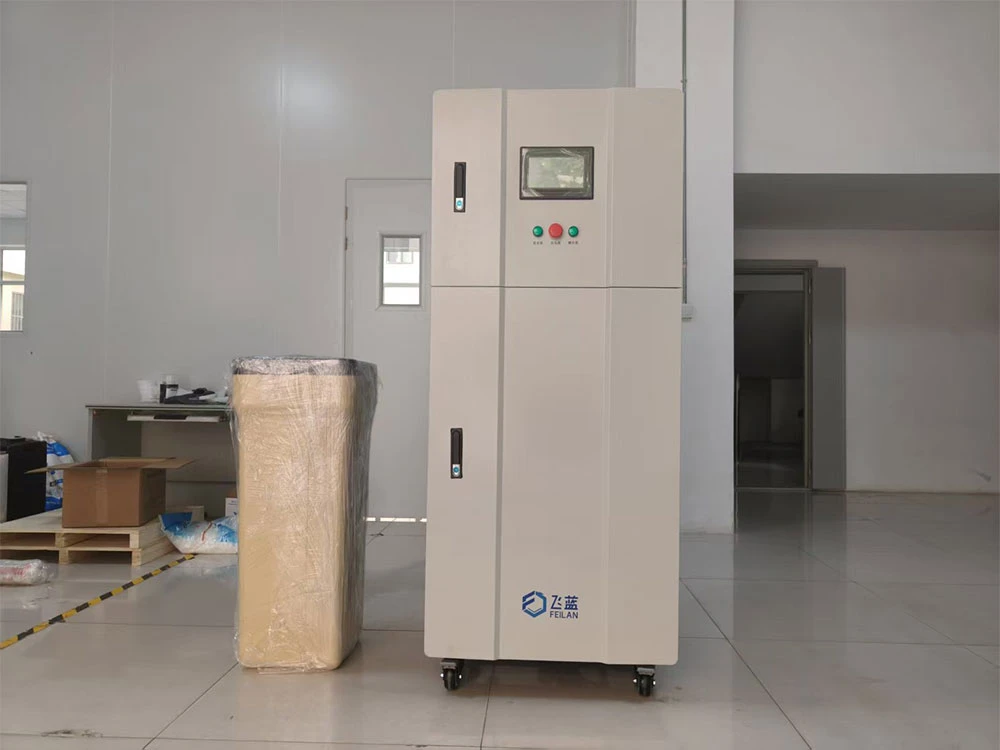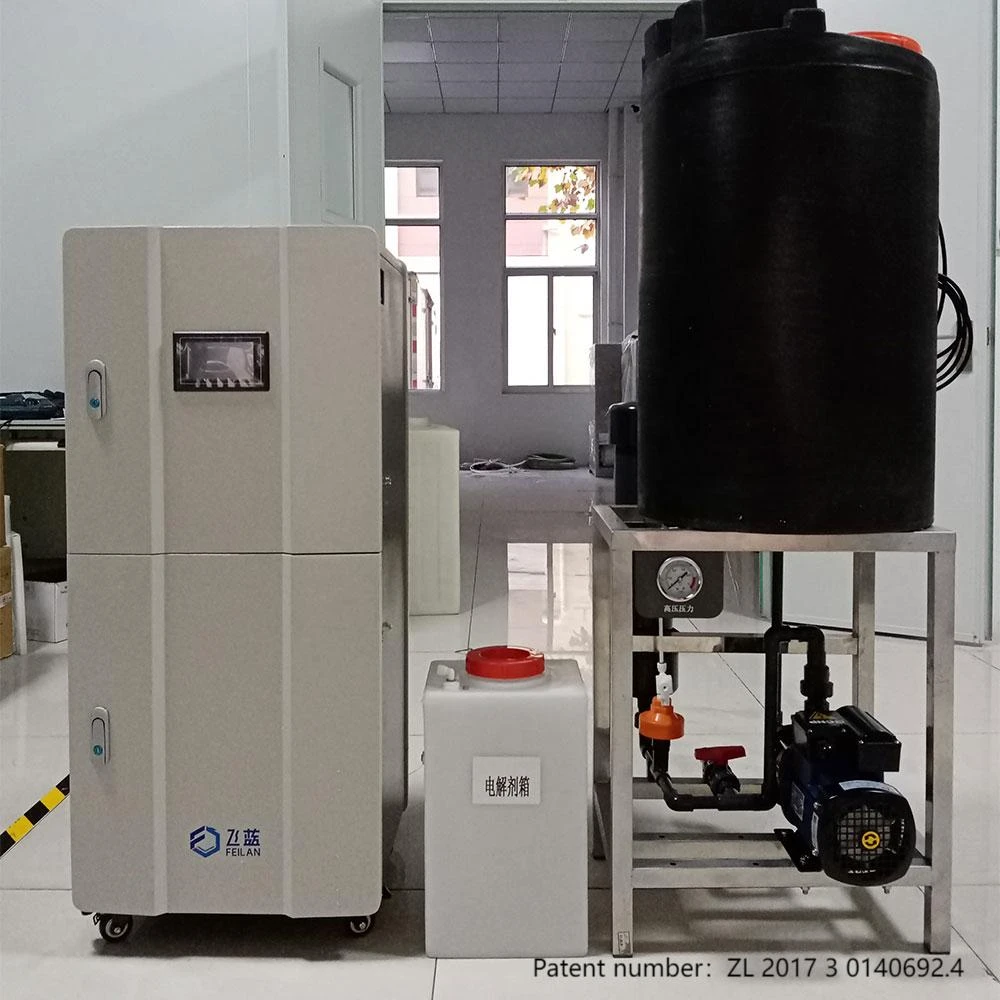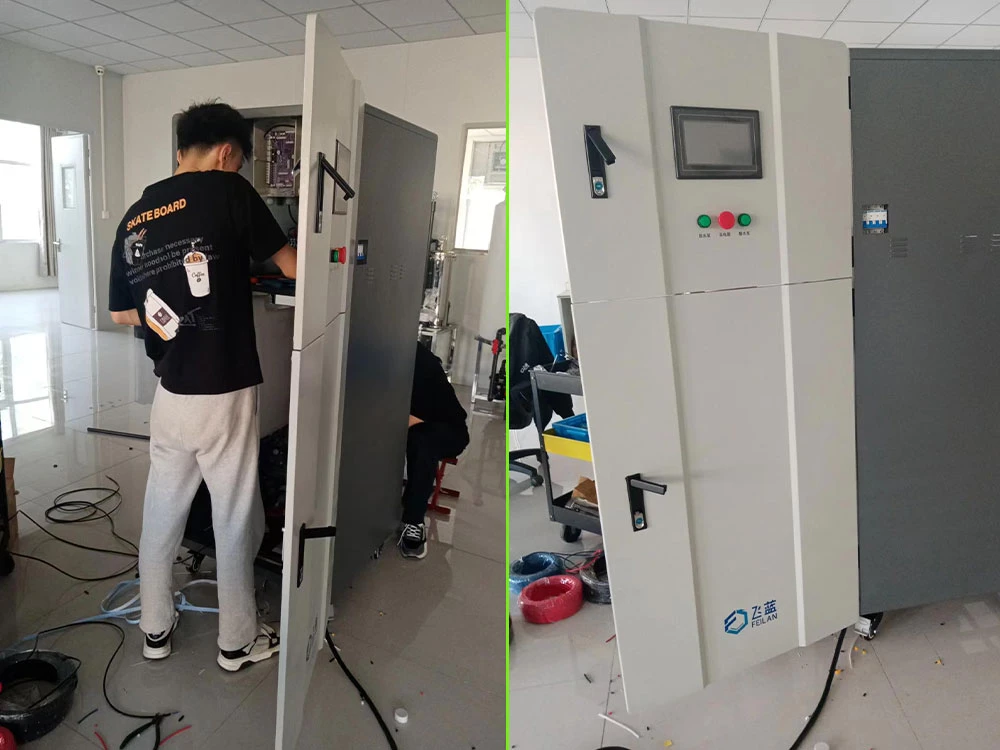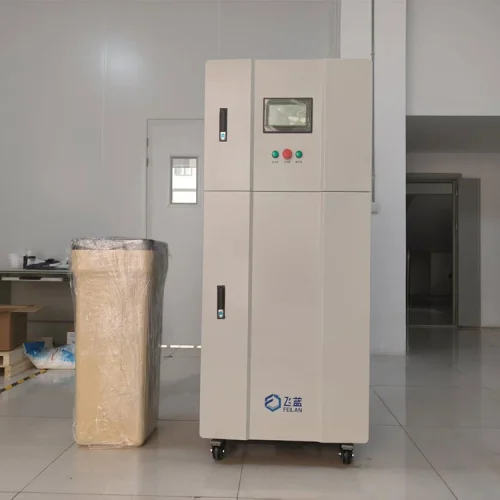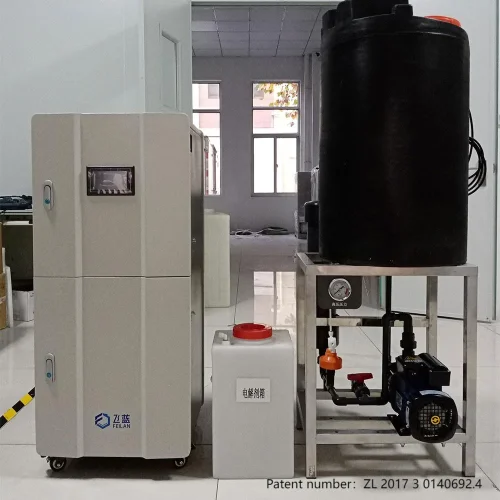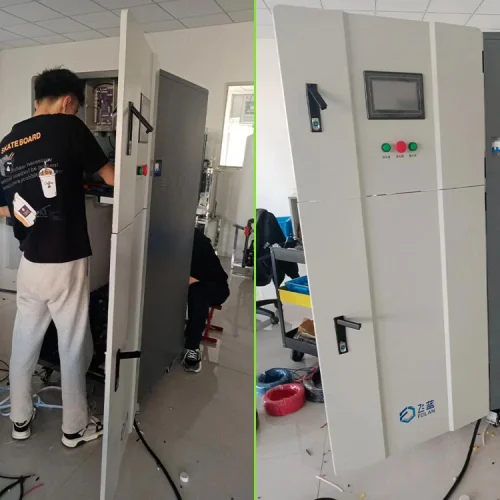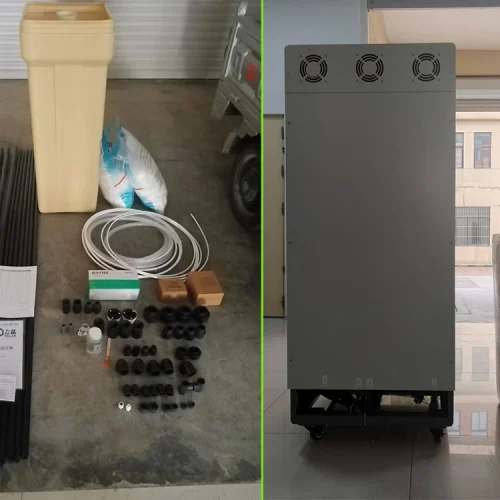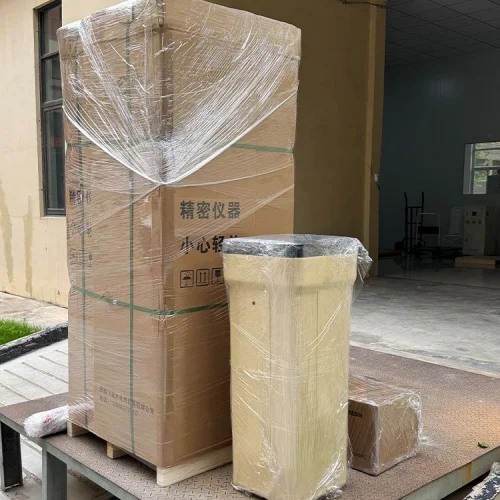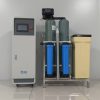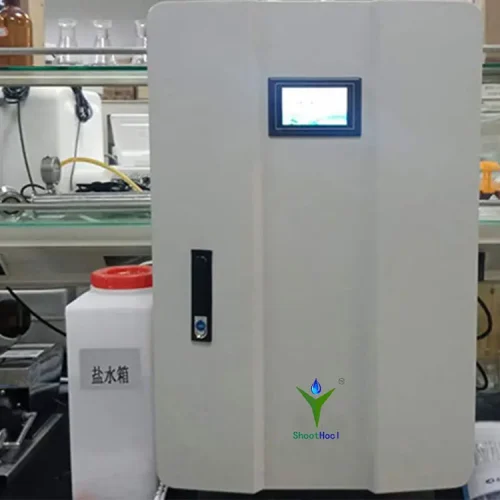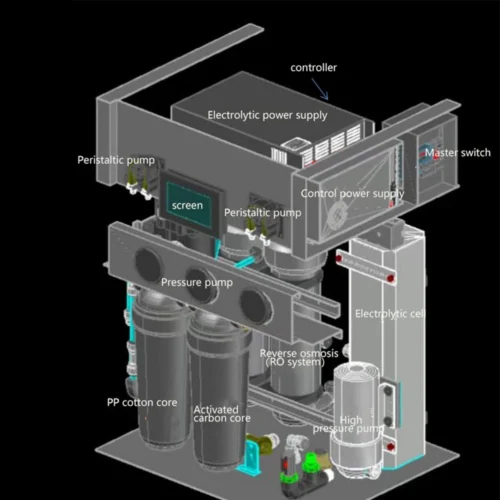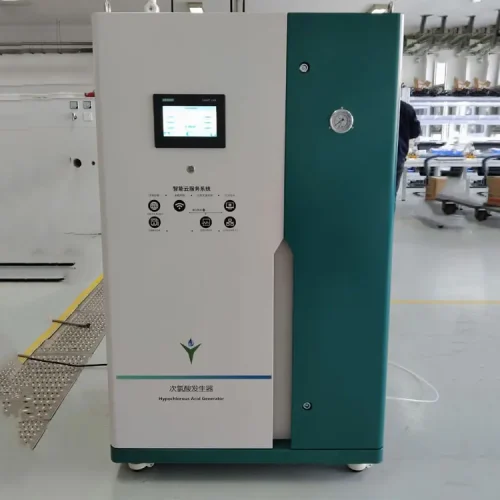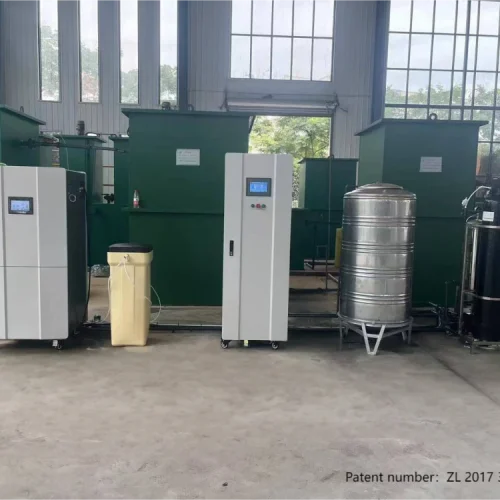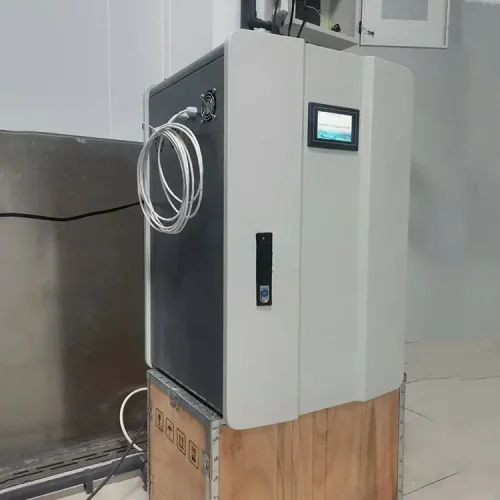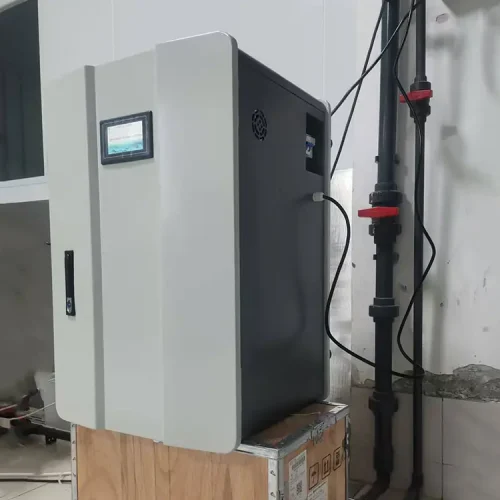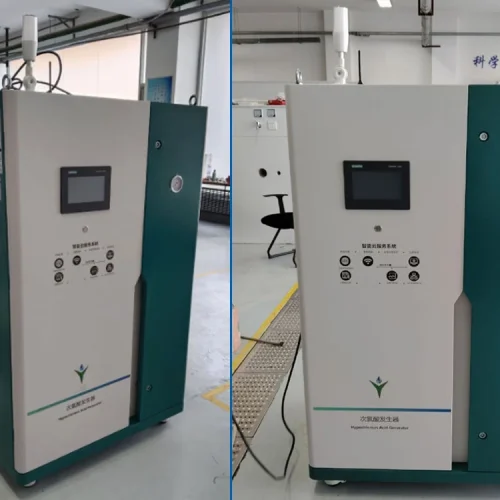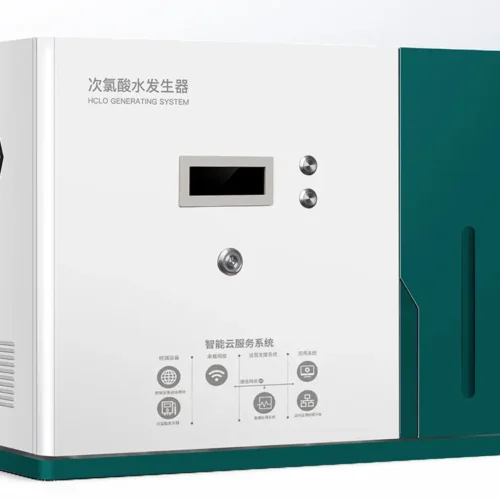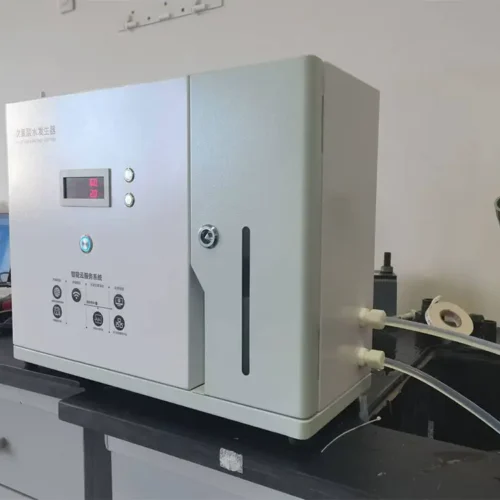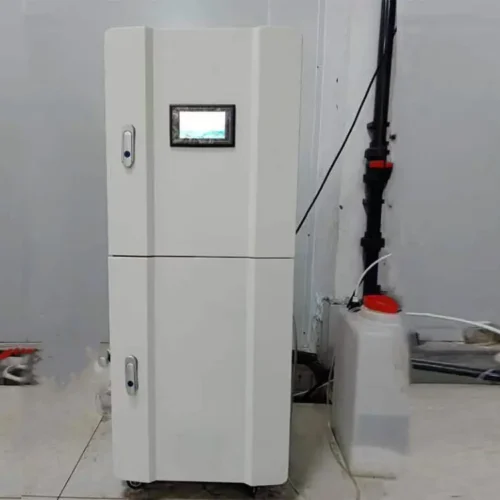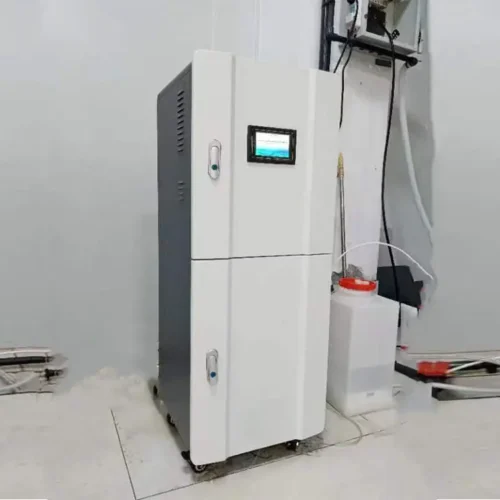There are various types of garbage in the garbage station, including kitchen waste, plastic, paper, metal, etc.
During the stacking process, these wastes will be decomposed by microorganisms, generating a large amount of malodorous gases.
Among them, hydrogen sulfide, ammonia, methyl mercaptan, etc. are the most common malodorous components.
These gases not only have a pungent smell but also possess certain toxicity. Long-term exposure to such an environment can cause harm to human health,
such as respiratory diseases, headaches, nausea and other symptoms. Meanwhile,
the diffusion of malodorous gases will also lead to a decline in the surrounding air quality and affect the ecological balance
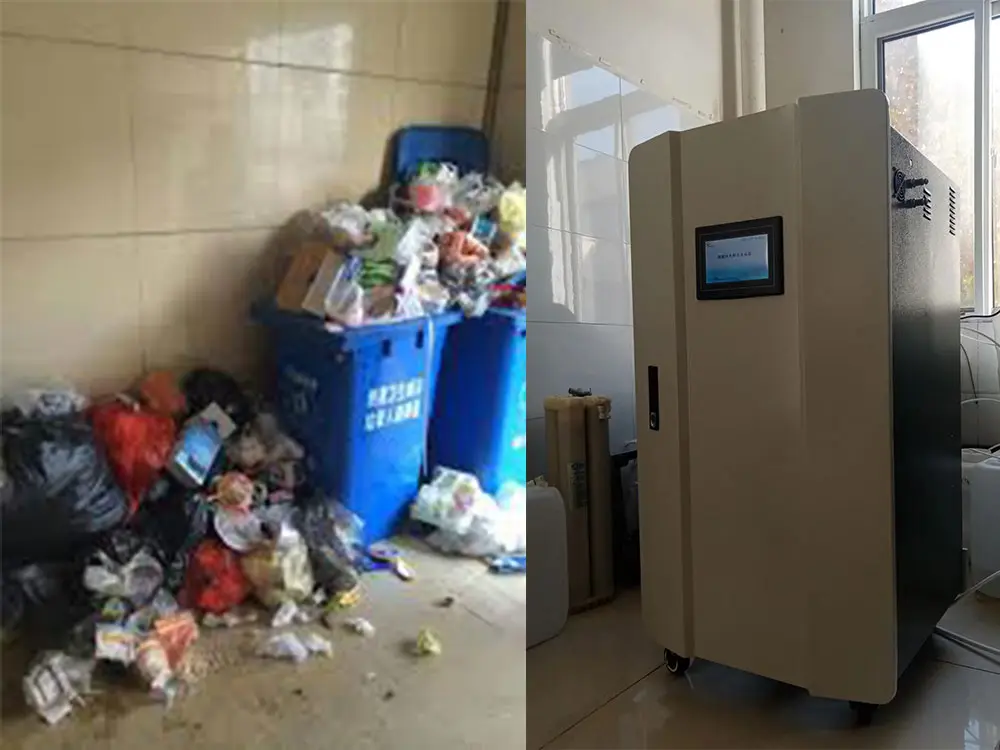
The working principle of hypochlorous acid generator
1,The hypochlorous acid generator produces a high-concentration hypochlorous acid solution by electrolyzing brine.
The core reaction process is as follows: In the electrolytic cell, sodium chloride (NaCl) and water (H₂O) undergo an electrolytic reaction
under the action of an electric current, generating sodium hydroxide (NaOH), hydrogen (H₂), and chlorine (Cl₂).
Chlorine gas further reacts with water to form hypochlorous acid (HClO) and hydrochloric acid (HCl). The reaction equation is as follows:
2NaCl + 2H₂O → 2NaOH + H₂↑ + Cl₂↑
Cl₂ + H₂O ⇌ HClO + HCl
2,Hypochlorous acid has strong oxidizing properties, which is the key to its deodorization ability.
When hypochlorous acid comes into contact with the malodorous gases in the landfill,
it can rapidly oxidize and decompose the organic and inorganic components in these gases. For example,
for hydrogen sulfide (H₂S), hypochlorous acid oxidizes it to sulfuric acid (H₂SO₄), and the reaction equation is:
H₂S + 4HClO → H₂SO₄ + 4HCl
For ammonia (NH₃), hypochlorous acid reacts with ammonia to produce nitrogen (N₂), water (H₂O), and hydrochloric acid. The reaction equation is:
2NH₃ + 3HClO → N₂↑ + 3H₂O + 3HCl
Through these oxidation reactions, hypochlorous acid converts malodorous gases into harmless or less harmful substances, thereby achieving the purpose of deodorization
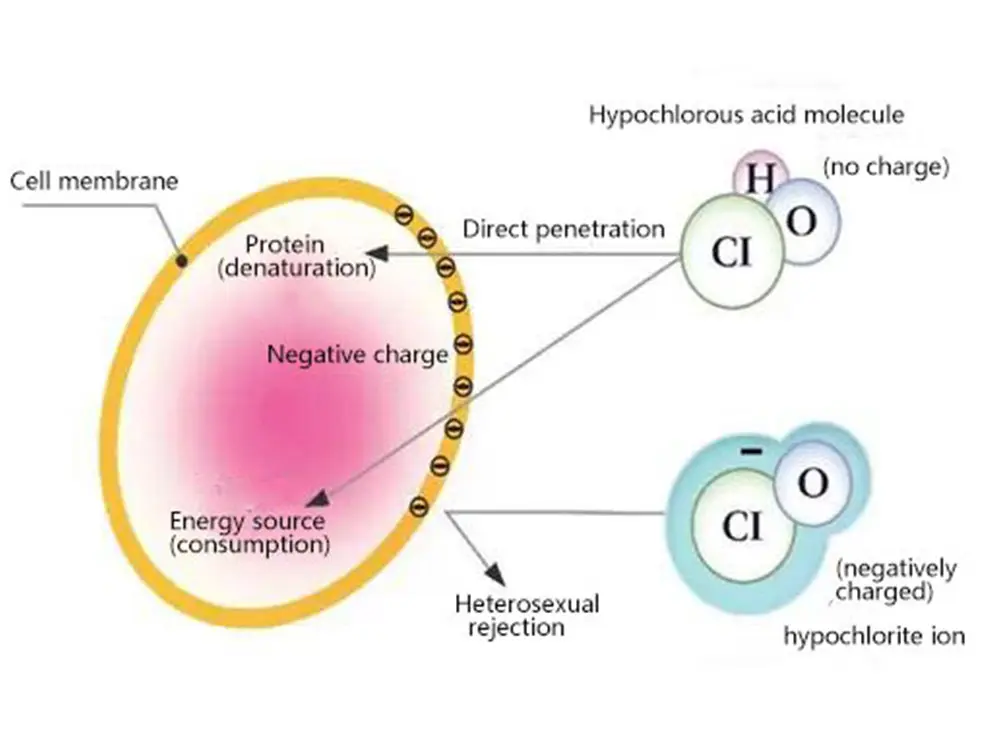
The application scenarios of hypochlorous acid generators
1,Landfill at the garbage station
In landfill sites, a large amount of garbage is piled up, and the malodorous gases produced during the landfill process are constantly released.
The hypochlorous acid generator can evenly spray the hypochlorous acid solution on the surface of the garbage and the landfill area through the spray system.
On the one hand, hypochlorous acid can rapidly decompose malodorous gases such as hydrogen sulfide and ammonia produced during the landfill of garbage,
reducing the spread of odors to the surrounding environment. On the other hand, its strong oxidizing property can kill harmful microorganisms in the garbage,
inhibit the further decomposition of the garbage by microorganisms, and reduce the generation of malodorous gases from the source.
Meanwhile, for the leachate produced by landfills, hypochlorous acid solution can also be treated to reduce the pollutant content in the leachate and lower its pollution risk to soil and groundwater.
2,Waste incineration plant
Waste incineration plants produce a strong foul smell during the storage and incineration of waste.
In the garbage storage area, the hypochlorous acid solution produced by the hypochlorous acid generator is atomized and sprayed,
which can effectively remove the unpleasant smell emitted by the garbage and improve the working environment.
Regularly spraying hypochlorous acid solution at the feed inlet and surrounding areas of the incinerator can reduce the escape of malodorous gases during the feed process.
In addition, hypochlorous acid can also assist in purifying the waste gas treatment system of incineration plants,
improving the treatment effect of waste gas and reducing the emission of harmful gases.
3,Garbage transfer station
As an intermediate link between garbage collection and transportation, garbage transfer stations have short but concentrated garbage retention times,
and the problem of foul odors is also quite prominent. The hypochlorous acid generator can spray the garbage in the transfer station in real time through a small spray device,
quickly decomposing the malodorous gas produced by the garbage. At the same time, add hypochlorous acid solution to the ground cleaning water of the transfer station.
While cleaning the ground, it also removes the odor emitted by the residual garbage on the ground, maintaining the cleanliness and odorlessness of the internal environment of the transfer station.
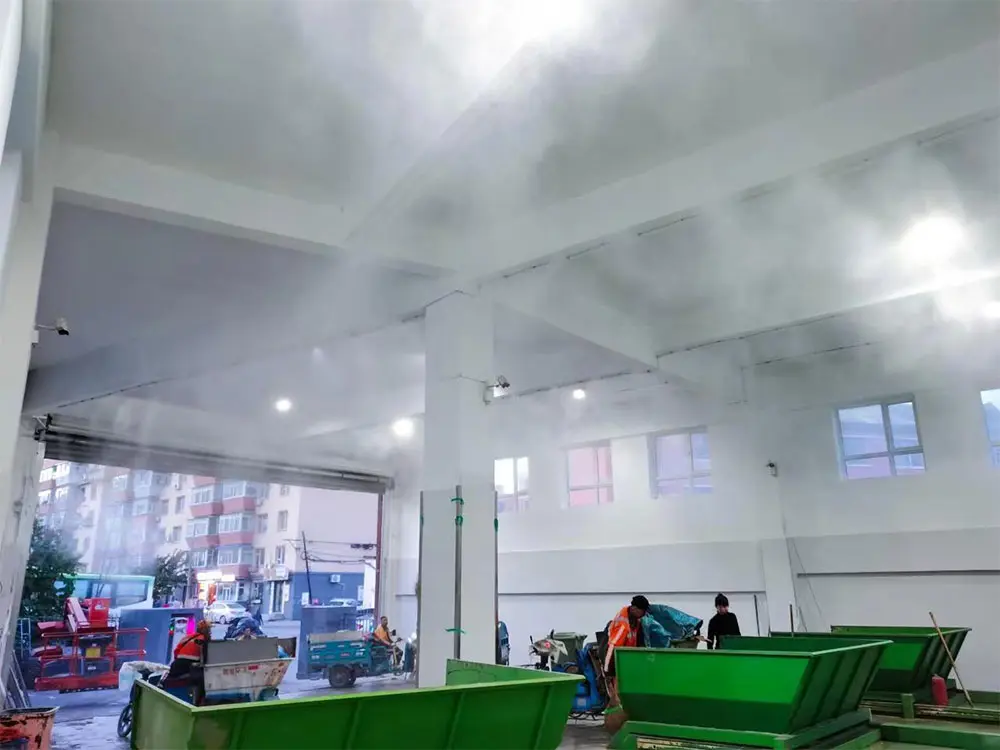
FAQ
1,Is hypochlorous acid safe for deodorization in livestock? Will it harm livestock and poultry?
Hypochlorous acid is a mild disinfectant with strong oxidizing properties but no irritation, and is very safe for livestock and poultry. After its action,
it decomposes into water and oxygen. It will not leave any harmful substances on the surface of livestock and poultry, feed, drinking water or
the breeding environment, nor will it corrode breeding equipment. Meanwhile, hypochlorous acid can effectively kill bacteria,
fungi and other microorganisms that cause odors, reducing the production of odorous gases such as ammonia and hydrogen sulfide from the source.
It not only does no harm to livestock and poultry, but also reduces the risk of respiratory diseases and
other infections in livestock and poultry by improving the breeding environment, thus promoting their healthy growth.
2,How effective is hypochlorous acid in deodorizing compared with other deodorants?
Compared with traditional deodorants, hypochlorous acid has a more significant and long-lasting deodorizing effect.
Most common deodorants use physical masking or acid-base neutralization principles, which can only temporarily mask odors but
cannot completely eliminate the source of the odor. Hypochlorous acid, with its strong oxidizing property,
can directly destroy the cell walls and cell membranes of bacteria, viruses and other microorganisms, rapidly decompose odor molecules,
and eliminate odors from the source. Meanwhile, hypochlorous acid can continuously play a role in sterilization and deodorization in the breeding environment,
maintaining a fresh air environment for a relatively long time, reducing the frequency of deodorization work, and improving the breeding efficiency.
3,How exactly should hypochlorous acid be used in livestock breeding?
Hypochlorous acid can be applied to livestock deodorization in various ways.
Spray equipment can be use to evenly spray the dilute hypochlorous acid solution on every corner of the livestock and poultry house,
such as the ground, walls, fences and air. It is recommend to spray 1-2 times a day. Hypochlorous acid can also be add to
the drinking water or cleaning water of livestock and poultry. It can not only deodorize but also play a certain role in sterilization and disinfection,
ensuring the health of livestock and poultry. It should be noted that before use, the hypochlorous acid solution should be accurately diluted according to the product instructions.
Different concentrations are suitable for different scenarios. Moreover, hypochlorous acid is prone to decomposition when exposed to light,
so it should be stored away from light and used immediately after preparation to ensure the deodorization effect.

